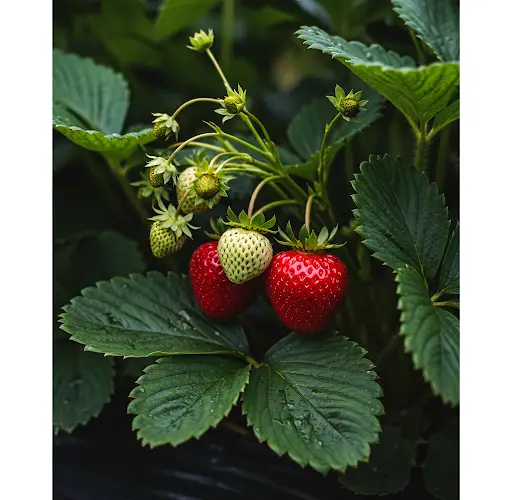Strawberries are one of the most popular and rewarding fruits to grow in home gardens. Their sweet, juicy berries are delicious fresh or in recipes, and the plants themselves are relatively easy to cultivate. If you want to expand your strawberry patch or share plants with friends, propagation is the key. Propagating strawberries allows you to multiply your plants quickly and economically, ensuring a plentiful harvest year after year.
This article explores the best methods for propagating strawberries, covering everything from runners to division and seed planting. Whether you’re a beginner or looking to improve your propagation success, these tips will help you grow more strawberry plants efficiently.
Why Propagate Strawberries?
Buying new strawberry plants each year can be costly, and store-bought plants may not always be suited to your climate or soil conditions. Propagating your own strawberries offers several advantages:
-
Cost savings: Multiply plants without purchasing new ones.
-
Preserve preferred varieties: Keep your favorite cultivars going.
-
Increase yields: More plants mean more berries.
-
Adapt plants: Propagate plants well adapted to your garden’s environment.
Method 1: Propagating Strawberries by Runners
The most common and easiest method to propagate strawberries is by using runners, also called stolons. These are horizontal stems that grow out from the mother plant and develop small plantlets at their tips.
How to propagate using runners:
-
Identify healthy runners: Choose runners with strong, healthy plantlets. The plantlets will have small leaves and roots forming.
-
Prepare planting sites: Either place the runner plantlet directly into the soil next to the mother plant or pot it in small containers filled with potting soil.
-
Secure the runner: Use small pins, staples, or stones to hold the runner’s plantlet firmly on the soil surface to encourage rooting.
-
Water regularly: Keep the soil moist but not soggy.
-
Allow roots to establish: Roots should develop within a few weeks. Once well-rooted, sever the runner stem connecting the new plantlet to the mother plant.
-
Transplant if needed: Move the new plant to its permanent growing location.
This method produces genetically identical plants, preserving the mother plant’s traits.
Method 2: Propagating by Division
Division is an effective method for some strawberry varieties, especially those that form clumps rather than runners.
Steps for division:
-
Dig up mature strawberry plants: Gently lift the entire plant, keeping roots intact.
-
Separate the crowns: Using a sharp knife or your hands, divide the plant into smaller sections, each with roots and at least one healthy crown (the growing point).
-
Replant divisions: Plant the divided sections immediately in prepared soil beds or pots.
-
Water and care: Keep the divisions moist and sheltered until they establish.
Division is less common than runner propagation but useful for day-neutral and alpine strawberries that produce fewer runners.
Method 3: Propagating from Seed
Growing strawberries from seed is less common but useful for breeding or experimenting with new varieties.
Seed propagation tips:
-
Harvest seeds: Collect seeds from ripe strawberry fruits or purchase fresh seeds.
-
Stratify seeds: Mimic winter conditions by refrigerating seeds for a few weeks to break dormancy.
-
Sow seeds: Sprinkle seeds on the surface of moist, well-draining seed-starting mix.
-
Maintain humidity and warmth: Cover trays with plastic wrap or a dome and keep at 60–70°F (15–21°C).
-
Germination: Seeds usually germinate in 2–3 weeks.
-
Transplant seedlings: Once seedlings develop several true leaves, transplant them into individual pots.
Seed-grown plants may take longer to produce fruit and may not be true to the parent plant’s variety.
Tips for Successful Strawberry Propagation
-
Choose healthy parent plants: Start with vigorous, disease-free mother plants for the best results.
-
Timing: Early spring or late summer is ideal for propagation to allow plants to establish before extreme weather.
-
Soil preparation: Use well-draining, nutrient-rich soil amended with organic matter.
-
Watering: Keep soil consistently moist during rooting but avoid waterlogging.
-
Sunlight: Place propagated plants in areas with full sun for strong growth.
-
Pest and disease management: Keep an eye out for pests like aphids or fungal issues, especially on young plants.
Aftercare for New Strawberry Plants
Once propagated plants are established, care is key to turning them into productive fruit bearers.
-
Fertilize: Apply balanced fertilizers or compost to support growth.
-
Mulch: Use straw or organic mulch to retain moisture and suppress weeds.
-
Prune runners: To encourage bigger berries, limit the number of runners on mature plants.
-
Protect from frost: Cover plants in early spring or late fall if frost threatens.
-
Regular harvesting: Picking ripe berries regularly encourages further fruit production.
Conclusion
Propagating strawberries is an excellent way to increase your plant stock, save money, and enjoy a larger harvest. Runners offer the simplest and fastest propagation method, while division and seed sowing provide alternatives for specific varieties or breeding projects.
By following these proven propagation tips, you can multiply your strawberry plants and create a thriving garden full of luscious berries. With patience and care, your strawberry patch will reward you with sweet, homegrown fruit season after season.



